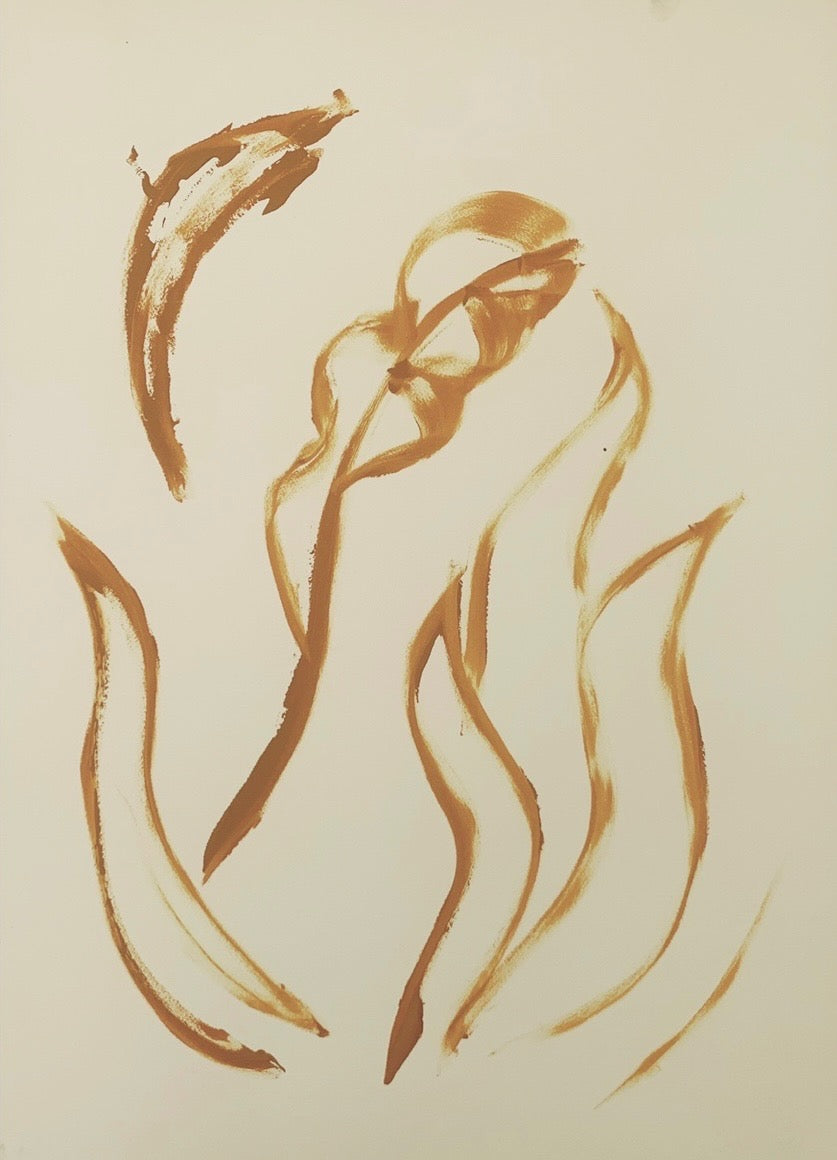
PURE ABSTRACTIONS, 2019
Pure Abstractions is a series that embraces the tension between meaning and meaninglessness, drawing the viewer into the paradox of non-representation as a form of representation in itself. At first glance, these pieces may seem devoid of content—random, chaotic, or disjointed—but they beckon a deeper inquiry into the very nature of aesthetic experience and the significance of absence. If meaning is constructed, and abstraction can be perceived as meaningless, does this absence of meaning carry meaning in itself? In a world rife with signification, what does it mean to encounter something without a defined purpose or narrative? Is beauty found in the very resistance to meaning?
This inquiry finds resonance in philosophy of aesthetics, particularly the ideas of Immanuel Kant and Arthur Danto. Kant’s notion of the “sublime” comes to mind—where beauty is not confined to simple pleasure or order, but emerges from the experience of the infinite and the unknowable. In the context of Pure Abstractions, the lack of clarity, of easily discernible forms, becomes a vehicle for experiencing beauty. The series challenges traditional notions of beauty that are grounded in representation and harmony, and instead suggests that beauty may lie in the ambiguity, the flux, and the indeterminacy of abstraction.
The question posed by Pure Abstractions—“Isn’t there meaning in meaninglessness?”—echoes Jean-Paul Sartre’s existentialist writings, particularly his exploration of nothingness. Sartre argues that absence and emptiness are not merely the lack of something, but part of the condition of human existence itself. He suggests that the very essence of being is tied to absence and the possibility of non-being. In a similar vein, the abstract nature of the series makes meaninglessness not an end but a form of existential possibility. The work does not negate meaning—it creates a space for it to emerge, or fail to emerge, depending on the viewer’s interpretation. What is beautiful is not simply an object of beauty but the process of confronting the very lack of definition. This invites the viewer to explore the potential for beauty in the intangible, and in the absence of predetermined significance.
Furthermore, Pure Abstractions can be interpreted through the lens of postmodern philosophy, which questions traditional hierarchies of meaning, structure, and order. Figures like Jacques Derrida have argued that meaning is never fixed but always deferred, a continuous play of signs that can never truly be pinned down. The abstraction in the series embodies this constant deferral—the viewer’s struggle to find meaning, and yet, meaning remains elusive. In this sense, the pieces operate as a site of resistance to the tyranny of fixed definitions and linear narratives.
The challenge in this series is to contemplate the nature of aesthetic beauty outside of conventional frameworks. Can something be considered beautiful if it defies easy categorization, if it does not adhere to traditional forms or structures? The beauty of pure abstraction, then, may reside in the freedom from the need to be understood, from the expectation of clarity. It becomes an invitation to the viewer’s imagination—to engage with the piece not by decoding it, but by surrendering to its indeterminacy. It asks us to see beyond our need for clear, structured meaning and recognize the beauty in uncertainty, in chaos, and in non-meaning.
In a sense, Pure Abstractions offers a mirror to the human condition, highlighting our perpetual search for significance in a world that often defies our desire for clarity and order. This search—this longing to find meaning in the meaningless—is not only a reflection of our innate need for understanding but also an acknowledgment of life’s inherent uncertainty. To engage with the series is to confront the unknown, and, in doing so, to perhaps experience beauty in the very incomprehensibility of existence.
Ultimately, Pure Abstractions serves as a meditation on the power of meaninglessness as an aesthetic force. It questions whether beauty is confined to structure and meaning, or if it can emerge in spaces of ambiguity and absence. In this void, there may not be any clear answers, but the very act of questioning—of contemplating the unknown—is itself a profound exploration of the human spirit.
